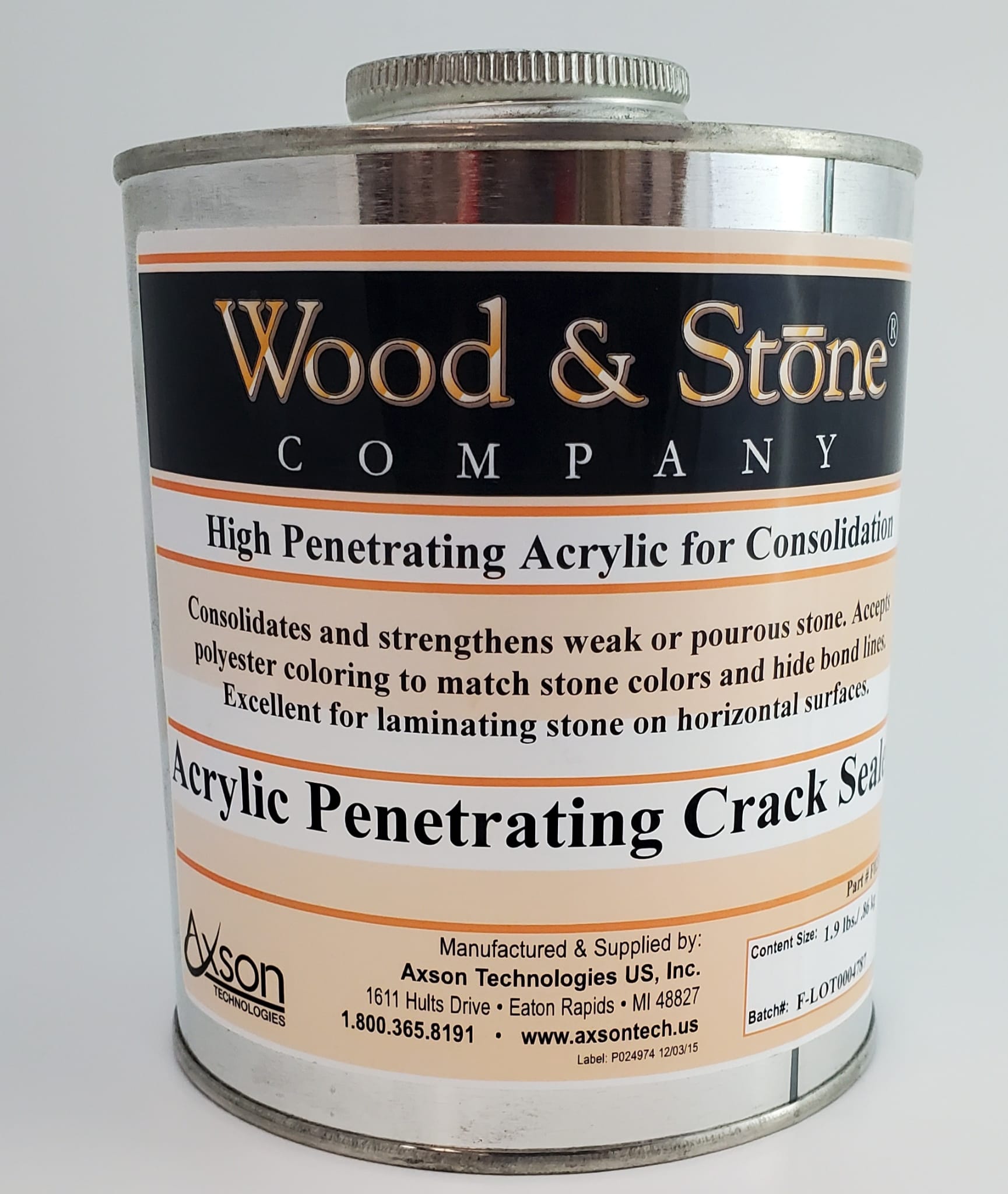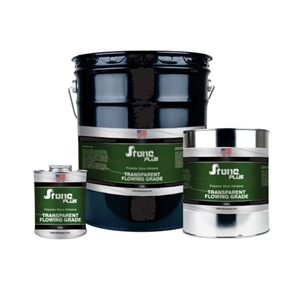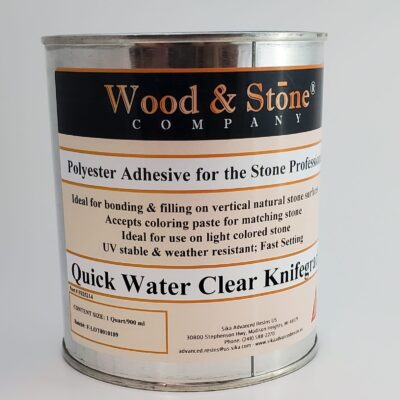Wood and Stone Acrylic Penetrating Crack Sealer 1 Quart
Acrylic Penetrating Crack Sealer products are acrylic-based adhesives and fillers designed for use with natural stone, especially granite. They range from clear to translucent in color, fast setting, and are easy to apply. Acrylic Penetrating Crack Sealer is a thin liquid that flows like water and is designed to fill fine cracks and reinforce the stone. All the formulations are cured using a benzoyl peroxide hardening paste.
Applications
These formulas are best suited for interior applications on natural or cast stones. They are especially well suited for granite and marble applications. Uses include consolidating or laminating slabs, repairing or patching broken stones, reinforcing fragile material, and filling porous or chipped stones.
Coloring
Acrylic Penetrating Crack Sealer products are easily colored to match any stone using our Polyester Coloring Pastes. The best shade can be obtained by mixing the product to a shade slightly darker than the actual stone color.
Directions for Use
Acrylic Crack Sealer is most effective when used according to the following instructions:
Preparation
The first step to using this product is to start with a clean, dry surface. This is achieved by taking the following steps:
- Using an appropriate detergent, clean the surface thoroughly making sure to remove all grease, oil, dust, or dirt from the surfaces to be bonded.
- Completely dry the surfaces for best results. Although this crack sealing product will bond to most surfaces, dry surfaces respond better and you will get better results if the surface is completely dry.
- When mixing, the ideal containers for this product are ones made of polyethylene plastic; since this product does not bond well with this type of material.
Mixing Instructions
Just like the method of preparation, mixing this crack sealer works best when the proper procedure is used. The following is a list of things to keep in mind while mixing the mastic and the hardener:
- If you are coloring or tinting the adhesive, add the coloring paste(s) to the mastic before mixing the mastic with the hardener.
- Use hardener at the rate of 2% to 4% of the weight of the mastic for the best curing and bond. This is approximately a 1/2″ to 1″ bead of hardener for every tablespoon of mastic.
- Additional hardener speeds up the curing time. However, it comes at a price, using more hardener than the recommended amount causes a deeper yellowing and reduces the strength of the bond.
- If too little hardener is used, it will cause the mixture to not cure properly.
- The curing process can be affected by the ambient temperature. Warmer temperatures speed the curing process, while temperatures below 32°F (0°C) will require heating the mixture to start the curing process.
- The product should be thoroughly mixed for the best results.
- The crack sealer remains workable until gelling occurs.
- This product becomes rubbery when gelling happens.
- Crack sealer should not be worked once gelling has begun.
- Excess material may be removed with a razor or chisel.
- These products should not be worked once gelling has begun.
Application
When bonding stones together, clamps and jigs should be used to ensure a thin bond layer (less than 0.016 inches (0.4 mm)) is achieved, thereby providing the strongest bond. After curing, the stone piece may be further processed without damaging the material.
Clean-Up
After use, equipment may be cleaned with toluene or acetone. Hands should be cleaned with a Waterless Hand cleaner or an appropriate solvent.
Storage Conditions
Always keep the container tightly sealed when not in use, and never expose the hardener to temperatures in excess of 100°F (38°C).
Products are chemically inhibited to extend shelf life and improve product consistency. Storage temperature, however, is an extremely important factor in maximizing the shelf life of the products. The materials should be stored in a cool environment (50°F (10°C)) whenever possible and should never be exposed to direct sunlight.
If these procedures are followed, these products should have a shelf life of at least one (1) year.
Precautions and Safety
Observe all measures as described on the container and product MSDS. Avoid contact with skin, eyes, and respiratory system. Use protective gloves and work in a well-ventilated area.



